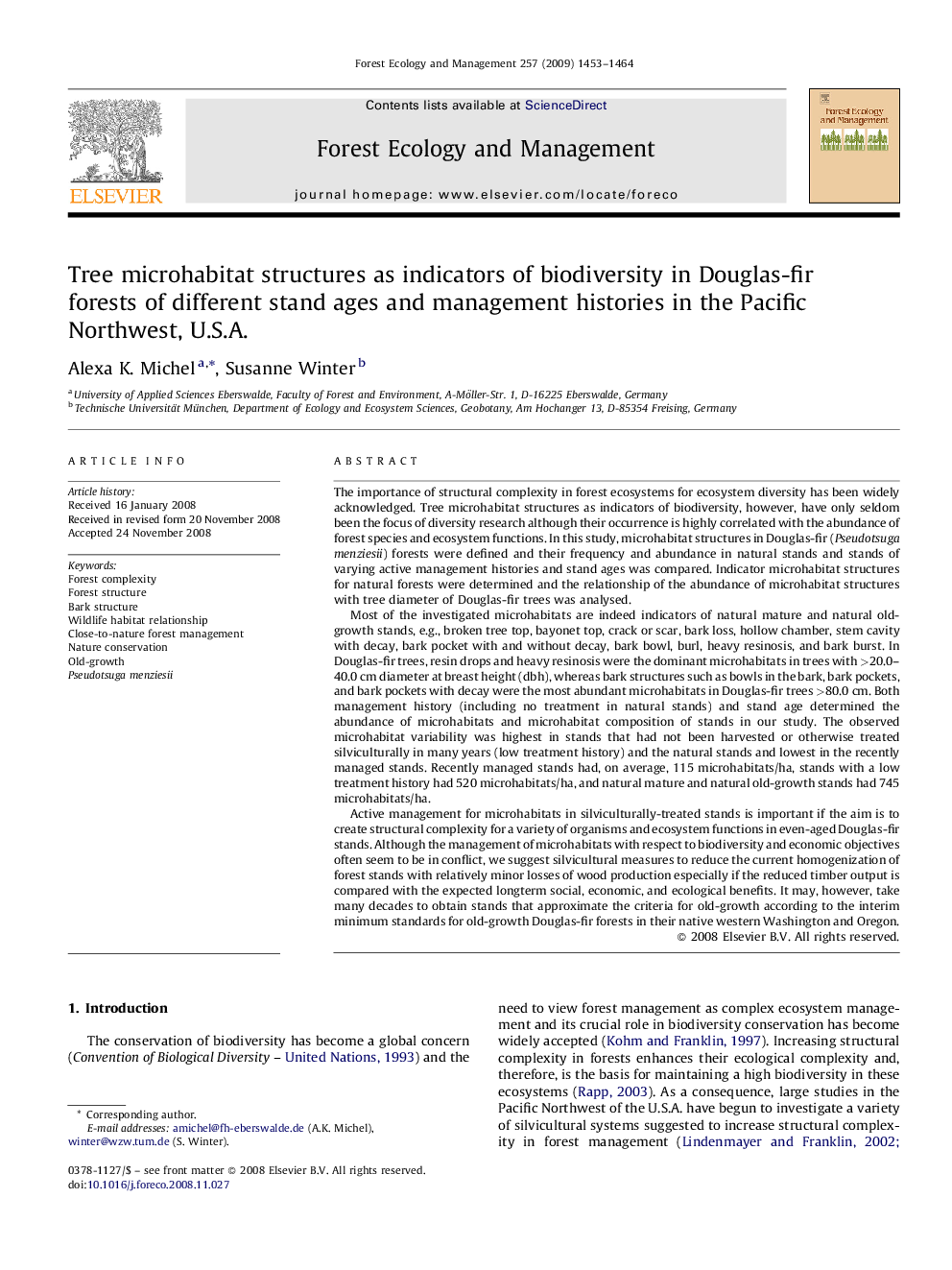| کد مقاله | کد نشریه | سال انتشار | مقاله انگلیسی | نسخه تمام متن |
|---|---|---|---|---|
| 89015 | 159329 | 2009 | 12 صفحه PDF | دانلود رایگان |

The importance of structural complexity in forest ecosystems for ecosystem diversity has been widely acknowledged. Tree microhabitat structures as indicators of biodiversity, however, have only seldom been the focus of diversity research although their occurrence is highly correlated with the abundance of forest species and ecosystem functions. In this study, microhabitat structures in Douglas-fir (Pseudotsuga menziesii) forests were defined and their frequency and abundance in natural stands and stands of varying active management histories and stand ages was compared. Indicator microhabitat structures for natural forests were determined and the relationship of the abundance of microhabitat structures with tree diameter of Douglas-fir trees was analysed.Most of the investigated microhabitats are indeed indicators of natural mature and natural old-growth stands, e.g., broken tree top, bayonet top, crack or scar, bark loss, hollow chamber, stem cavity with decay, bark pocket with and without decay, bark bowl, burl, heavy resinosis, and bark burst. In Douglas-fir trees, resin drops and heavy resinosis were the dominant microhabitats in trees with >20.0–40.0 cm diameter at breast height (dbh), whereas bark structures such as bowls in the bark, bark pockets, and bark pockets with decay were the most abundant microhabitats in Douglas-fir trees >80.0 cm. Both management history (including no treatment in natural stands) and stand age determined the abundance of microhabitats and microhabitat composition of stands in our study. The observed microhabitat variability was highest in stands that had not been harvested or otherwise treated silviculturally in many years (low treatment history) and the natural stands and lowest in the recently managed stands. Recently managed stands had, on average, 115 microhabitats/ha, stands with a low treatment history had 520 microhabitats/ha, and natural mature and natural old-growth stands had 745 microhabitats/ha.Active management for microhabitats in silviculturally-treated stands is important if the aim is to create structural complexity for a variety of organisms and ecosystem functions in even-aged Douglas-fir stands. Although the management of microhabitats with respect to biodiversity and economic objectives often seem to be in conflict, we suggest silvicultural measures to reduce the current homogenization of forest stands with relatively minor losses of wood production especially if the reduced timber output is compared with the expected longterm social, economic, and ecological benefits. It may, however, take many decades to obtain stands that approximate the criteria for old-growth according to the interim minimum standards for old-growth Douglas-fir forests in their native western Washington and Oregon.
Journal: Forest Ecology and Management - Volume 257, Issue 6, 10 March 2009, Pages 1453–1464